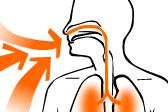
The most important reason to ensure that your home is properly ventilated is to ensure that the quality of the air is not making you sick, and to avoid sick building syndrome.
For a typical home owner indoor air quality is a difficult thing to evaluate, but it plays a major role in your health and how comfortable or habitable your home is. Modern buildings incorporating passive design techniques are built to be airtight so as to improve energy efficiency, but shutting yourself off from fresh air can be very dangerous. This is why ventilation is a particularly important concern. Yes, there are air pollutants and harmful microbes everywhere in the outside world, but there are just as many – often more – inside your home.

The need for breeze
As a society, we tend to spend more time indoors than our ancestors, so as a result we are breathing in more microbial contaminants and gases. Cleaning chemicals, for example, can linger in your home if it is constantly shut up tight. In bathrooms, kitchens and laundries, exhaust fans are vital. But some pollutants are limited to one area of your home and, as is the case with controlling humidity, relying simply on infiltration is rarely sufficient.
The Building Code of Australia (BCA) states that “habitable rooms” require permanent access to fresh air and natural light, most commonly in the form of windows. This access is to come through an opening not less that 10% of the floor area. The main reason for this is to avoid ‘sick building syndrome’ – a phenomenon that occurs when people aren’t getting the natural light and ventilation necessary for their general health and wellbeing. The health effects of natural light and fresh air offered by windows are pivotal to the health of a home and its inhabitants.
The effects of poor ventilation
Most of the time, sick buildings are created by inefficiencies with air conditioning and ventilation. The most common causes of sick building syndrome are a build-up of moisture and mould. Living in such a home can lead to eye, nose, throat or skin problems, or hypersensitivity. In fact, some figures suggest that up to 21% of asthma is caused by poor ventilation.





